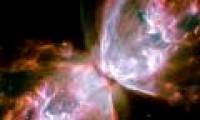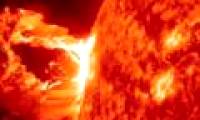
Our sun is less active than other similar stars. Due to black spots and other phenomena, the Sun has a weaker brightness variation.

Cosmic rays come from supernova explosions and the Sun's magnetic activity affects the weather on Earth.

Researchers from the US Geological Survey (USGS) have dismissed the long-held hypothesis that the sun's activity shakes the ground, leading to an increase in seismic activity.

The US Aeronautics and Space Administration (NASA) has captured impressive images that show the sun has produced the strongest flare from the beginning of the year, and temporarily

The US Aerospace Agency (NASA) predicts this year the sun will be the weakest in a century.

Photographs of the sun on March 12 with a telescope show a faint object roughly the size of a planet connected to the sun by a dark colored wire.

The amount of unstable light from the Sun shining on Earth could partly explain Europe's climate changes over the past 1,000 years.
 Our sun is less active than other similar stars. Due to black spots and other phenomena, the Sun has a weaker brightness variation.
Our sun is less active than other similar stars. Due to black spots and other phenomena, the Sun has a weaker brightness variation. Cosmic rays come from supernova explosions and the Sun's magnetic activity affects the weather on Earth.
Cosmic rays come from supernova explosions and the Sun's magnetic activity affects the weather on Earth. Researchers from the US Geological Survey (USGS) have dismissed the long-held hypothesis that the sun's activity shakes the ground, leading to an increase in seismic activity.
Researchers from the US Geological Survey (USGS) have dismissed the long-held hypothesis that the sun's activity shakes the ground, leading to an increase in seismic activity. The US Aeronautics and Space Administration (NASA) has captured impressive images that show the sun has produced the strongest flare from the beginning of the year, and temporarily
The US Aeronautics and Space Administration (NASA) has captured impressive images that show the sun has produced the strongest flare from the beginning of the year, and temporarily The US Aerospace Agency (NASA) predicts this year the sun will be the weakest in a century.
The US Aerospace Agency (NASA) predicts this year the sun will be the weakest in a century. Photographs of the sun on March 12 with a telescope show a faint object roughly the size of a planet connected to the sun by a dark colored wire.
Photographs of the sun on March 12 with a telescope show a faint object roughly the size of a planet connected to the sun by a dark colored wire. The amount of unstable light from the Sun shining on Earth could partly explain Europe's climate changes over the past 1,000 years.
The amount of unstable light from the Sun shining on Earth could partly explain Europe's climate changes over the past 1,000 years.

 Do signals from extraterrestrial civilizations detected by Sky Eye really exist?
Do signals from extraterrestrial civilizations detected by Sky Eye really exist? 'City without air conditioning' in China: People don't know what heat is!
'City without air conditioning' in China: People don't know what heat is! The element of the sun god is giving scientists a headache
The element of the sun god is giving scientists a headache Unique Village: Roofs Become Roads for Residents!
Unique Village: Roofs Become Roads for Residents! Top 7 strange psychological effects of the brain that we all have without knowing
Top 7 strange psychological effects of the brain that we all have without knowing Which is the most terrifying bedroom elixir in Chinese history?
Which is the most terrifying bedroom elixir in Chinese history? Earth's core may start rotating in reverse
Earth's core may start rotating in reverse A day in Japan can be up to 30 hours long, does this country live in a different 'timeline'?
A day in Japan can be up to 30 hours long, does this country live in a different 'timeline'?